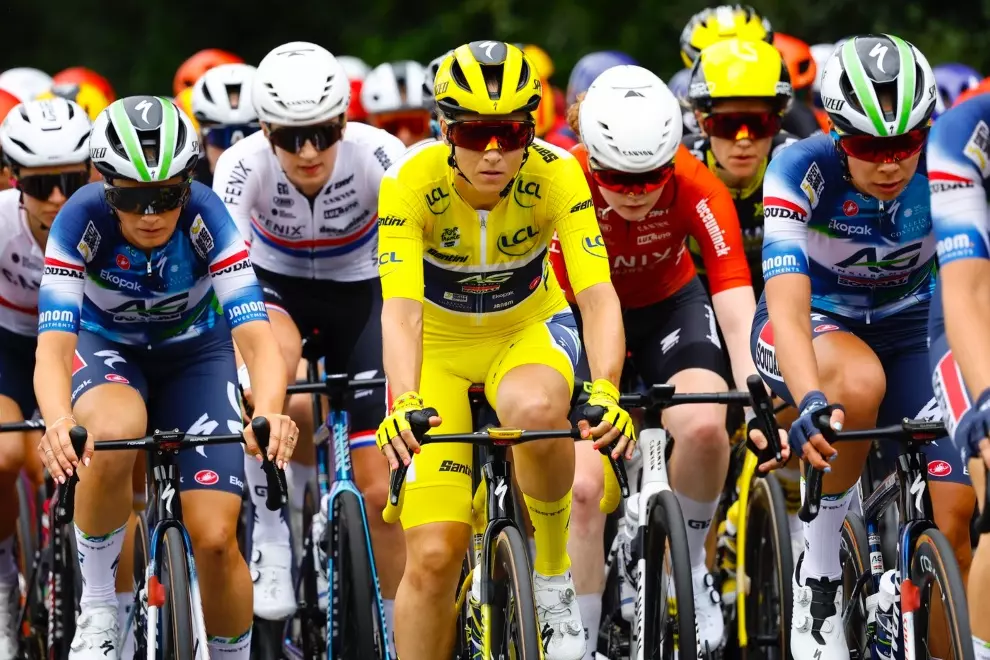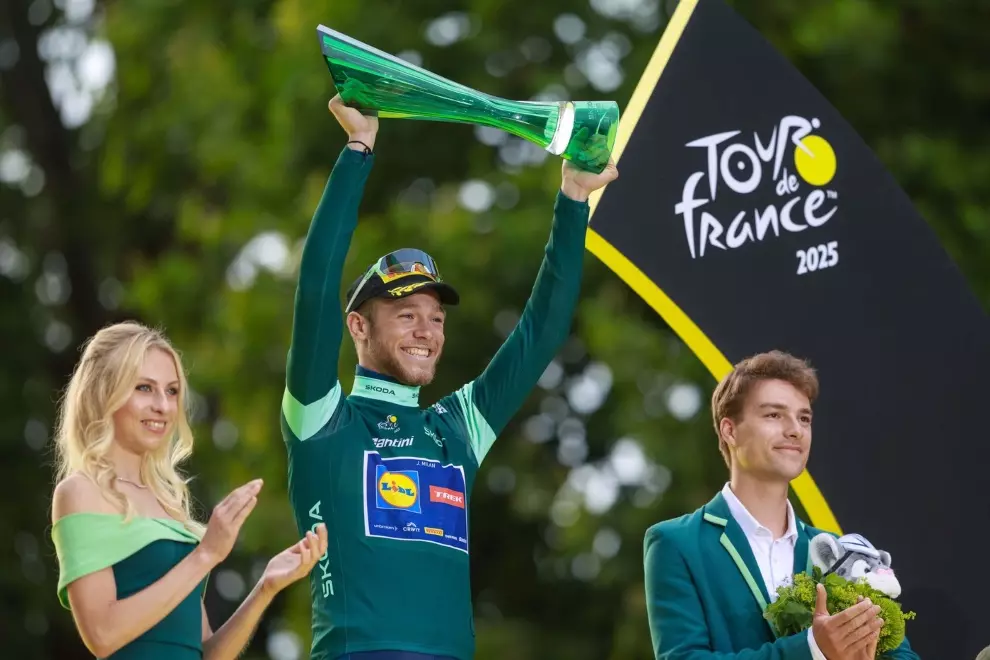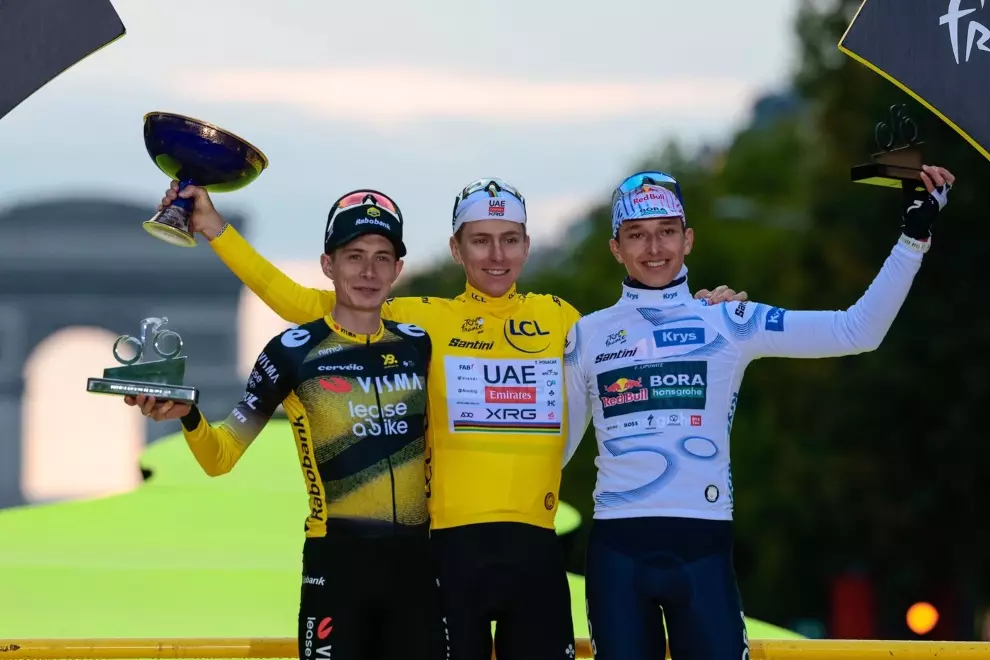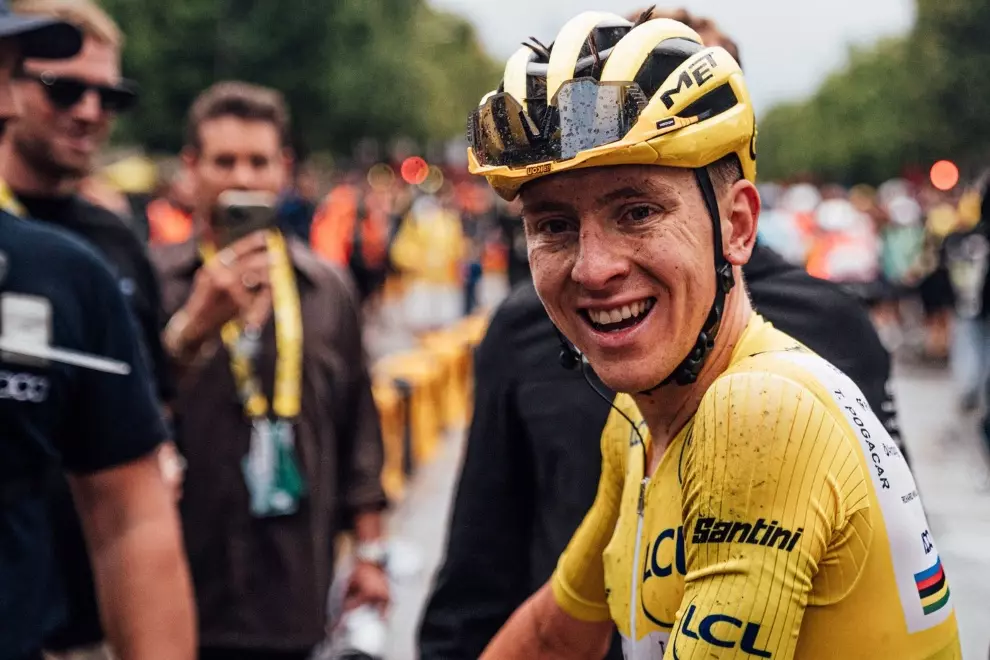In a press statement released on Visma–Lease a Bike’s website, the team announced that the first race of his comeback would be the Superprestige cyclo-cross race at Mol on December 23. That would be followed by five more ‘cross races, at Loenhout (Dec. 27), Gullegem (Jan. 4, 2025), Dendermonde (Jan. 5) and finishing with the World Cup races at Benidorm (Jan. 19) and Maasmechelen (Jan. 25).
Van Aert will spend the two weeks between the Dendermonde and Benidorm races at a Visma training camp, apparently wanting to be at or near his peak for the two World Cup races.
“Cyclocross remains my first love, which is why I enjoy returning to it every winter,” he was quoted as saying in the press statement. “This winter, we’ve opted for a compact schedule of six races that fit well into my training plan. It will be a cyclocross season I approach purely out of love for the sport, but with modest ambitions. After my crash in the Vuelta and my knee injury, it’s essential to make the best use of the time I have to prepare for the road season. A few cyclocross races fit nicely into that plan, but the schedule is deliberately more limited than in previous years.”
Assuming everything goes smoothly, van Aert will then prepare for the spring Classics and the rest of the road season, presumably including a return to the Tour de France with his team leader, Jonas Vingegaard. The 2025 season will be of monumental importance to van Aert because he has to prove, to himself, the team and his many fans, that he can still be counted among the superstars of the sport.
Last year was disastrous for him because he crashed in late March in the Dwars door Vlaanderen and did not return to his top form until the Vuelta, in late August. He won three stages in that race and had the green jersey in the bag when he crashed on a wet descent on stage 16, badly injuring his right knee.
From his off-road competitions, van Aert has always been one of the better bike-handlers in the peloton, so the two serious crashes in 2024 (plus a not very serious crash in the Tour) are worrying signs – unless this year was just an outlier, for unknown reasons. After all, the entire team suffered from road crashes and as a result had, for its high standards, a poor season.
But his results had also fallen off. After winning seven one-day races between 2020 and 2022, he only won one in 2023-24, though it was a significant win, beating Mathieu van der Poel (Alpecin-Deceunick) and Tadej Pogačar (UAE Team Emirates) in the E3 Saxo Bank Classic. In addition, he hasn’t won a Tour de France stage since 2022, when he won the Skoda green jersey and helped Vingegaard win his second yellow jersey.
Could it be that his team has been asking too much of him? After all, what other cyclist rides the spring Classics to win, then goes to the Tour de France to win stages and help his team leader in the mountains? As van Aert himself has said, he doesn’t have the physique of a climber and doesn’t want it, but how often was he seen in the daunting mountains of the Tour, either leading Vingegaard up a steep climb or at the front of a breakaway, driving the pace to soften up Vingegaard’s opposition?
The answers to those two questions are ‘no other rider’ has a similar burden and ‘often’. Van der Poel rides the Classics and then the Tour to ride leadout for teammate Jasper Philipsen, but he takes it easy on the climbs and does not go all out to win stages. In fact, he has won exactly one Tour (and Grand Tour) stage; van Aert has won four Tour stages and the three Vuelta stages from this year. Van der Poel manages his season to suit his schedule, ambitions and fitness. But van Aert has to adapt his schedule to the demands of his team and the needs of his team leader.
The question now is how the multiple crashes of this season have affected both van Aert and the team. Next year will be an important year for both as they seek to return to the success that had them sitting on top of the racing world for several years. For the team, the issue is if it has the firepower to compete with Pogačar and his powerful support team and the wherewithal to avoid serial crashes. If one or two riders on a team go down, that’s just in the nature of the sport. But when a dozen or so riders suffer serious injuries, then the team needs to examine it’s methods.
The same applies to van Aert. Based on his Vuelta performance, he still has the legs to compete with the best riders on the road. The question is if he still has the riding skills and the composure to stay on his bike and avoid injury. The answer to that question will determine his future in the sport.




